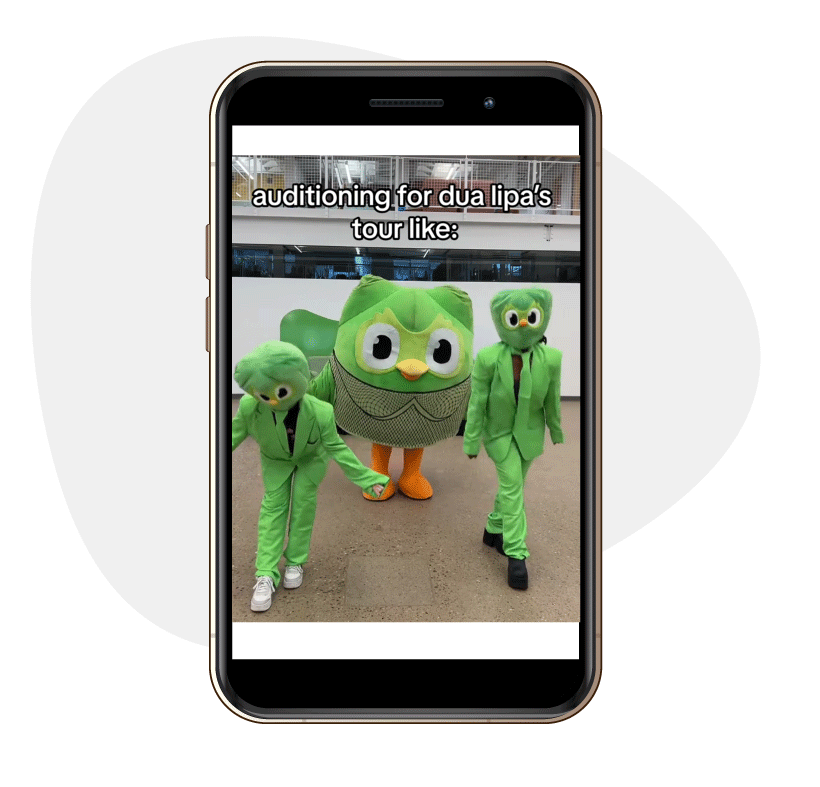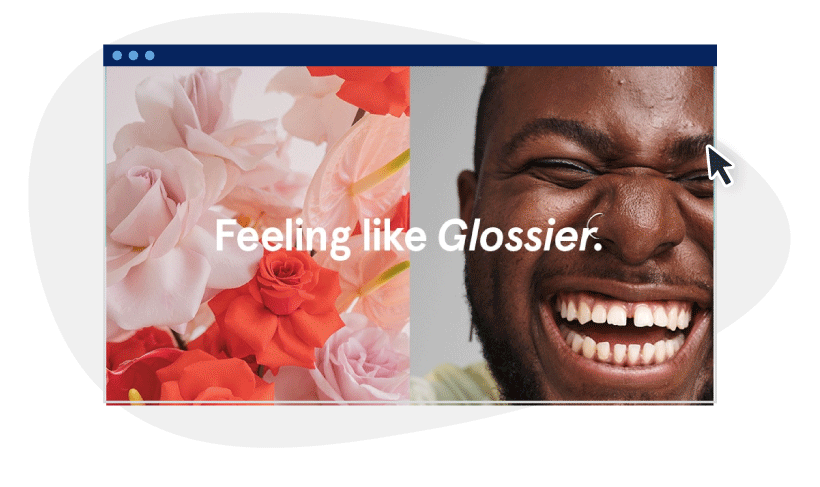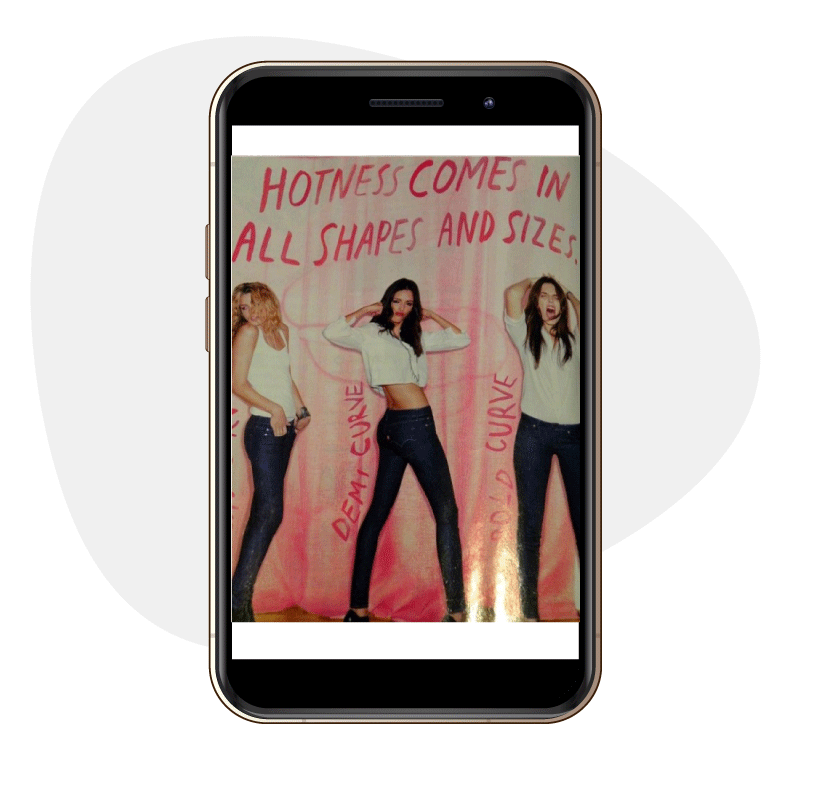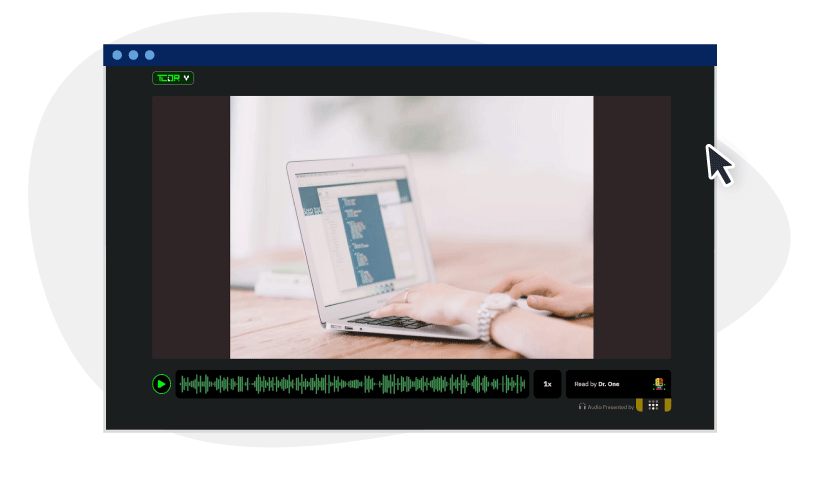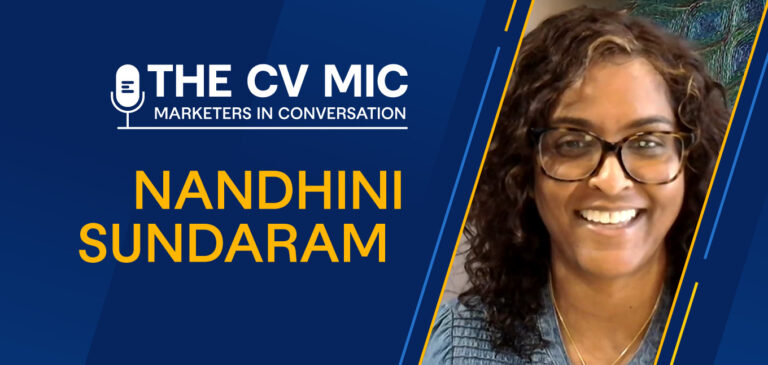Finding ways to engage with Gen Z can be uniquely challenging for marketing professionals. Maybe your content comes across as too cheugy. Maybe you don’t even know what cheugy means. (FYI, it’s used to describe something cringey or too try-hard.)
Gen Z is a huge demographic with a lot of buying power, so it’s vital for content marketers to get it right. However, mistakes in your approach, platform choices, and focus can hinder your reach. Translation: Your Gen Z audience is gonna ghost you and could even turn to your competitors instead.
So how do you take your content from basic to bussin’? As you continue to evolve your content strategy, take the following content marketing pitfalls into account.
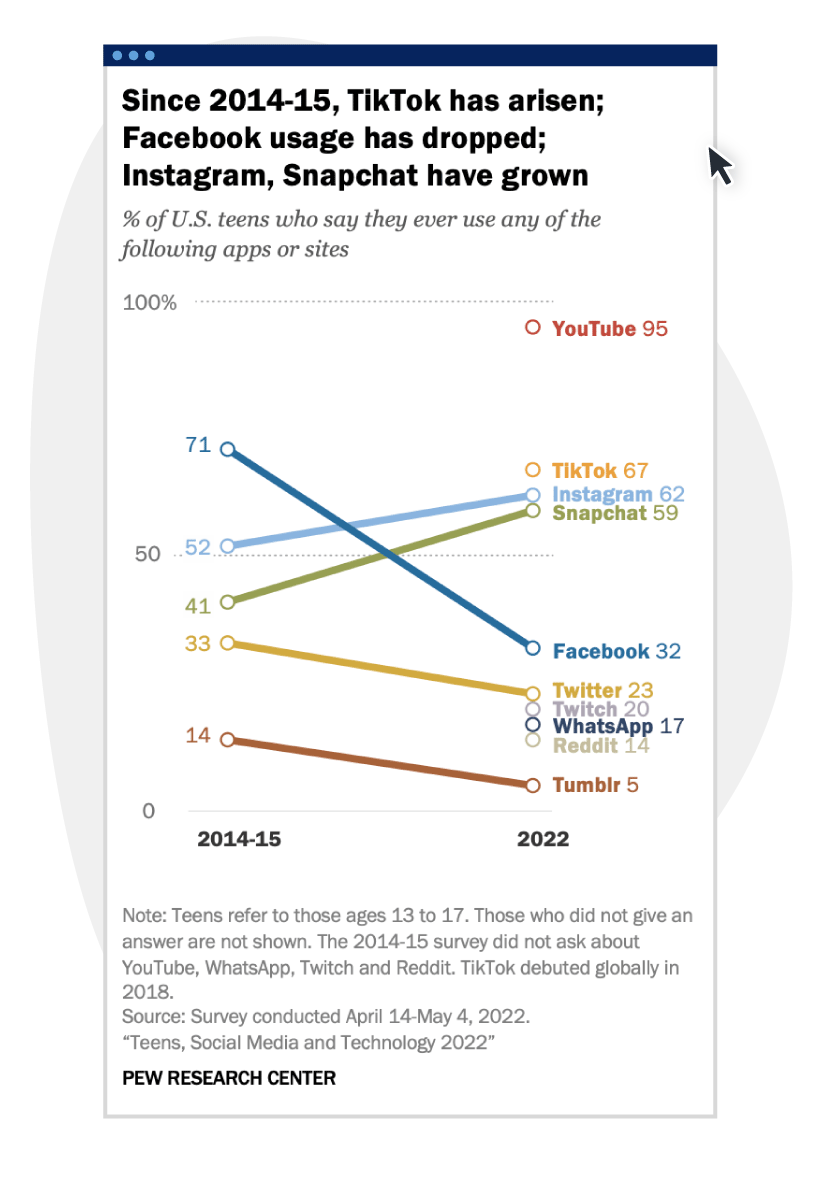
Credit: Pew Research
1. Lacking High-Quality Social Media Presence
As if you didn’t need the reminder, but Gen Zers spend most of their time on YouTube and TikTok. Pew Research recently found that they enjoy Instagram for curated moments and are now spending less time on Snapchat. Gen Z was the first generation to grow up with digital devices easily at their grasp, so a life apart from social media is unthinkable to most.
But for content marketers? Navigating these outlets to reach a Gen Z audience is essentially a digital minefield. Several things might happen:
- You might shy away from using social media altogether. Gen Z is a social generation; this faux pas can cost you their loyalty. While good content marketing starts by adding quality content to your website, it’s not complete without sharing that information on the platforms where your users hang out.
- You might target the wrong social media platforms. Not all social media platforms are created equal for reaching a Gen Z audience. You’ll generally find Zoomers on photo- and video-heavy like YouTube, TikTok, and Instagram, so it’s wise to focus on these specific channels when it makes sense. While some brands have recently started to shy away from TikTok in particular due to the potential ban, doing so can prevent you from reaching a massive demographic, as 60% of TikTok users are Gen Z. TikTok is ensuring protection for the brands they work with in the event of a ban, meaning you can confidently TikTok to your heart’s content if it makes sense for your brand to do so.
- You might target platforms that don’t make sense for your brand. On the other hand, while TikTok and YouTube tend to be most enticing to Zers as a whole, this isn’t to say you can’t find Zoomers on other platforms like LinkedIn. Each business should look internally and determine what is right for their brand. For example, a B2B company targeting specific types of business professionals may need to tailor their approach more towards a platform like LinkedIn versus the more common Gen Z spaces.
- You might approach the platform with the wrong user intent in mind. It’s crucial to understand why your audience gets on each platform, such as viewing mindless funny videos, gathering news, or shopping. Posting a TikTok with a long-winded presentation about your product’s use cases? Big yikes, as a Zoomer might say.
There’s no one “right” way to approach one platform. However, Gen Zers on discussion boards across the internet indicate some of their favorite brands are those that either:
- Are authentic and fun
- Use social influencers on their favorite platforms to raise product awareness
The pattern seems to be getting the word out via influencers and unique social media marketing campaigns, while appealing to Zoomers’ desire for inclusion and being unique.
Credit: TikTok
Want an example of authentic and fun? Look no further than Duolingo, who boasts an impressive 12.5 million followers on TikTok. Duolingo has fully tapped into the power of Gen Z humor. The company creates absurdist videos of its bird mascot paired with whatever pop song or TikTok sound is most trendy at the time. They’ve also gained significant popularity by “shipping” their mascot Duo with music artist Dua Lipa. (Get it? Because her name sounds like Duo?)
For example, if a company is doing influencer marketing right, Nike is the brand to beat. They’re ranked as Gen Z’s favorite 2023 brand largely due to their influence and the vast number of celebrities, athletes, and influencers who sport the brand.
2. Misunderstanding Content Consumption Habits
Many Gen Zers prefer short, to-the-point, and entertaining content — though again, this depends on your chosen platform. Short-form videos on Reels, Stories, and TikTok will win their engagement over longer pieces.
However, Gen Z does tend to enjoy longer essay-type videos on platforms like YouTube, specifically if the content is entertaining and relates to an interest area. Because Zers need both education and entertainment to hold their interest, brands should analyze their content marketing to ensure it is hitting the right points to draw their attention and keep it. Strive to create content that captures their imagination while teaching them something new.
In terms of written content, the ideal blog post length of 1,500 to 2,500 words typically stands across age groups, particularly for “What is…” and “How to…” types of articles. Despite the common trope that Gen Z has a short attention span, it’s a mistake to think that Gen Z can’t handle this length of written content. Anything under 600 words, as the hard minimum, is much too short to show your authority on a given subject.
However, remember that while they consume a lot of information, Zoomers will skip over anything irrelevant to them. Know their pain points so you can address them through your content and keep your audience engaged with interactive sections of any content that ask the user to click an option to hear more about a topic of interest.
Further, pay attention to your tone no matter what type of content you choose. Gen Z humor can vary from other generations, so it’s a good idea to run split testing and have control groups tell you if the content gives the impression you want. Their humor is extremely layered and often veers into dark humor, absurdism, or anti-humor territory. There’s a fine line between what Zoomers typically find funny versus what they might see as cringeworthy pandering.
3. Ignoring the Importance of Authenticity and Inclusivity
Marketers sometimes skim over the data about authenticity and its importance to post-millennials. Further, Gen Zers want enterprises that state their values and have open discussions with customers.
Some examples of major faux pas to avoid with Gen Z audiences include:
- Trying to disguise your messaging or trick users into clicking links
- Posting content on a website or social media and then failing to engage users who comment and ask questions
- Not speaking out against human rights violations or social issues surrounding a current event
- Not building inclusive messaging and imagery into your content and brand
Credit: Ad Week
One example of a brand that is widely liked by Gen Z consumers for its authenticity is Glossier, which uses social influencers to create inclusive messages. Since Gen Z views inclusion favorably, they’ve embraced the brand’s message.
Another example is Prada’s Miu Miu label, which saw a 58 percent increase in sales by offering things like a micro-mini skirt. They then started a conversation on social media about the fashion trend, showing they care about their audience’s input.
On the other hand, you’re probably better off not speaking about social issues at all if you’re not confident you can do so without alienating your audience. Take, for example, the infamous 2017 Pepsi ad featuring supermodel Kendall Jenner. While the ad claimed to be promoting a message of unity during a very politically divided time, the public decried the ad as using a serious protest movement as a way to sell products.
Or consider the Levi ad “Hotness Comes in All Shapes and Sizes.” This ad is unique in that its main message is an example of excellent marketing to Gen Z, who care about and actively seek brands that promote body positivity.
Credit: Business Insider
However, the message was lost in the fact that the print ads only showed thin women. The lesson to learn here is that if you promote authenticity and inclusivity in your content marketing materials, your entire brand needs to deliver.
4. Ignoring Mobile-Friendly Design
Since 98 percent of Zoomers own a smartphone and say their phone is their most important digital device, marketing to this age group means making sure your content is easily accessible on this medium.
What does this mean for content marketers? Surprisingly, a lot. To keep Gen Z from immediately swiping out of your content, you’ll want to keep these best practices in mind:
- Rewrite your introductions to get to the point quickly, as mobile devices don’t have as much physical space, and visitors will only see one or two paragraphs at a time.
- Break content into short paragraphs that are easy to skim on both mobile and desktop.
- Run your content through a service like Grammarly or Hemmingway App to remove any unnecessary words or lengthy phrases.
- Break up your content with pictures and videos.
- Make sure the text size doesn’t appear too large or small on mobile devices.
- Offer a TL:DR at the beginning or end of your content.
Try previewing your content on your own mobile device before publishing. If you struggle to read it, your Gen Z counterparts surely will, too.
5. Not Leveraging Emerging Technologies and Trends
Gen Z is adept at seamlessly adding new tools and technology to the mix. They love to learn and will study any new development until they understand how to apply it to their work and lives. Some examples of emerging technologies you can embrace in your marketing include:
- Virtual Reality: The augmented reality and virtual reality markets are worth $40.4 billion and are expected to hit $62 billion by 2029. Use them in your marketing campaigns to draw Zers in.
- Artificial Intelligence: Zoomers love anything that makes their lives easier. They’re happy to chat with a bot or use ChatGPT to brainstorm ideas.
From autonomous everything to data management, this generation is open to trying new things — and they want you to be, too.
Credit: Hacker Noon
Marketers can tap into Gen Z’s natural curiosity with strategies such as offering VR in their campaigns or using AI to make their content unique or accessible. For example, technology publisher HackerNoon offers AI-generated audio versions of all content featured on their site, making content easy for readers to access on the go.
Ready to Win Over Gen Z?
While making marketing mistakes can alienate Gen Z, simple adjustments like being more open can not only attract them but also increase word-of-mouth marketing through other post-millennials.
If you need help engaging users, talk to a content specialist and learn how ClearVoice can elevate your audience engagement. With data from polling and a better understanding of where Zoomers stand, now is the perfect time to reassess and realign marketing strategies to reach this important demographic.
